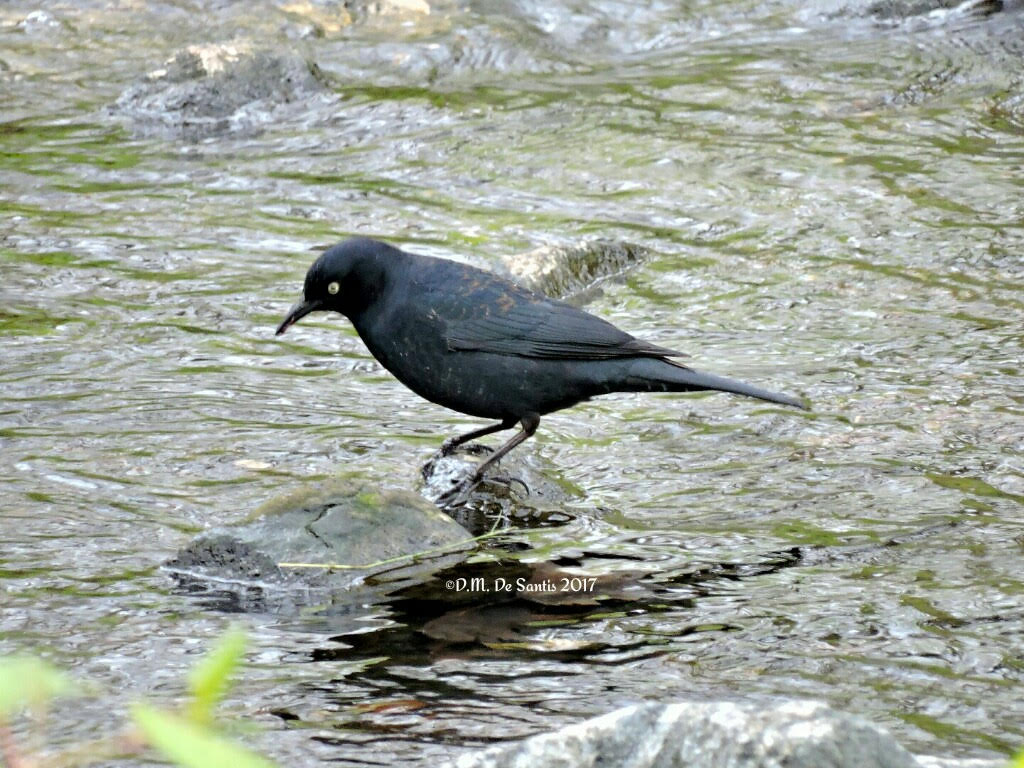Many years ago, when I first joined the Bergen County Audubon Society as the education director, I was very proud to be asked to help put together our “Birding for Beginners” class over at Teaneck Creek Conservancy.
I was fortunate enough to be, along with Harold Feinberg, our almost legendary field trip director of years past. Not long into the walk a flock of seemingly nondescript Blackbirds flew in. Just as our beginner birders were ready to pay no mind to them and walk past the birds that by now were walking along the stream banks, Harold called everyone together.
“Take a good look,” Harold said. “You may not be seeing these birds for much longer.” Harold was right of course. Our Rusty Blackbird is disappearing and their numbers still continue to drop till this day.
We have seen some great success stories in the birding world in recent years. The Bald Eagle has made a triumphant recovery from the edge of extinction. The Peregrine Falcon, once gone from the Eastern United States, has now returned, and the Osprey has become almost commonplace where it once had disappeared.
Yet today there are many birds much less known that are in serious decline. But like an old birding colleague told me, “It’s tough getting people excited about a blackbird.”
Although other bird species may seem much more exciting and can more easily motivate people to protect them, the Rusty Blackbird lacks a press agent and gets little fanfare regarding its plight. But that does not lessen the fact that it is in serious trouble and can use our help. While it may be a challenge to get some people excited about these special little birds we all should be very concerned and made aware concerning the future of this fast disappearing species.
The National Audubon Society lists the Rusty Blackbird on its “Yellow” alert status category on the “Watch list.” This means a species that is either declining or rare. These typically are species of national conservation concern. The Rusty Blackbirds numbers have been on the decline for more than 40 years, from an estimated 13 million in 1965 to 2 million in 2004, a more than 10 percent yearly decrease and an almost 99 percent loss with no end in sight. And maybe just as frightening is that the reasons for their declines are not completely understood.
Exactly how to help the Rusty Blackbird is complicated and the experts are not sure where to start. Scientists’ theories on the dramatic decline of the Rusty Blackbirds include acid rain and mercury accumulation on breeding grounds. In addition, the Rusty Blackbird is now listed as very vulnerable to climate change as their breeding ground in the boreal forests in the north continues to dry up more and more. To make matters worse Rusty Blackbirds sometimes can fall victim to lethal “blackbird control” programs which were more prevalent in the 1960s and 1970s but still continue today. This practice kills any blackbird regardless of species.
Rusty Blackbirds, which can be seen in our area from late fall through April, can be easily confused with Grackles or even Red-winged Blackbirds. So keeping a close eye on the field marks is important for a positive ID. In winter, male Rusty Blackbirds are recognized by their rusty feather edges, pale yellow eye and buffy eyebrow. Females are gray-brown. They also have rusty feather edges, pale eyes and a bold eyebrow, contrasting with darker feathers right around the eye. Breeding males are dark glossy black.
In our part of the country and elsewhere, as it always does, any species in decline comes down to habitat loss. The Rusty Blackbirds critical wintering habitat is also vanishing and that is why preserving wooded wetlands in our area becomes so important to helping these birds hang on and survive.
Rusty Blackbirds prefer bogs, ponds, swamps and slow streams. They seek out wet areas to feed at the water’s edge for invertebrates and tiny fish. They sometimes even wade in the water as they hunt throughout their migration route. In winter they forage in swamps and wet woodlands and can also visit your backyard bird feeder, as many bird feeder reports come in as the wild food disappears.
Although wooded wetlands are disappearing in our area we have very important Rusty habitats like Losen Slote Creek in Little Ferry and the Teaneck Creek Conservancy. These habitats always need protecting. For that matter even your local patch of woods near your home should be watched as they try to survive this very tough winter.
In this “Year of the Bird,” just as Harold would have wanted, we all need to join together to better understand and respect all of our magically diverse bird species. It is and always will be part of our obligation as stewards of the Earth.
For more on the rusty Blackbird click here http://www.audubon.org/field-guide/bird/rusty-blackbird
You can help the Rusty Blackbird by reporting them to E-bird www.ebird.org and getting involved with the International Rusty Blackbird working group http://rustyblackbird.org/


